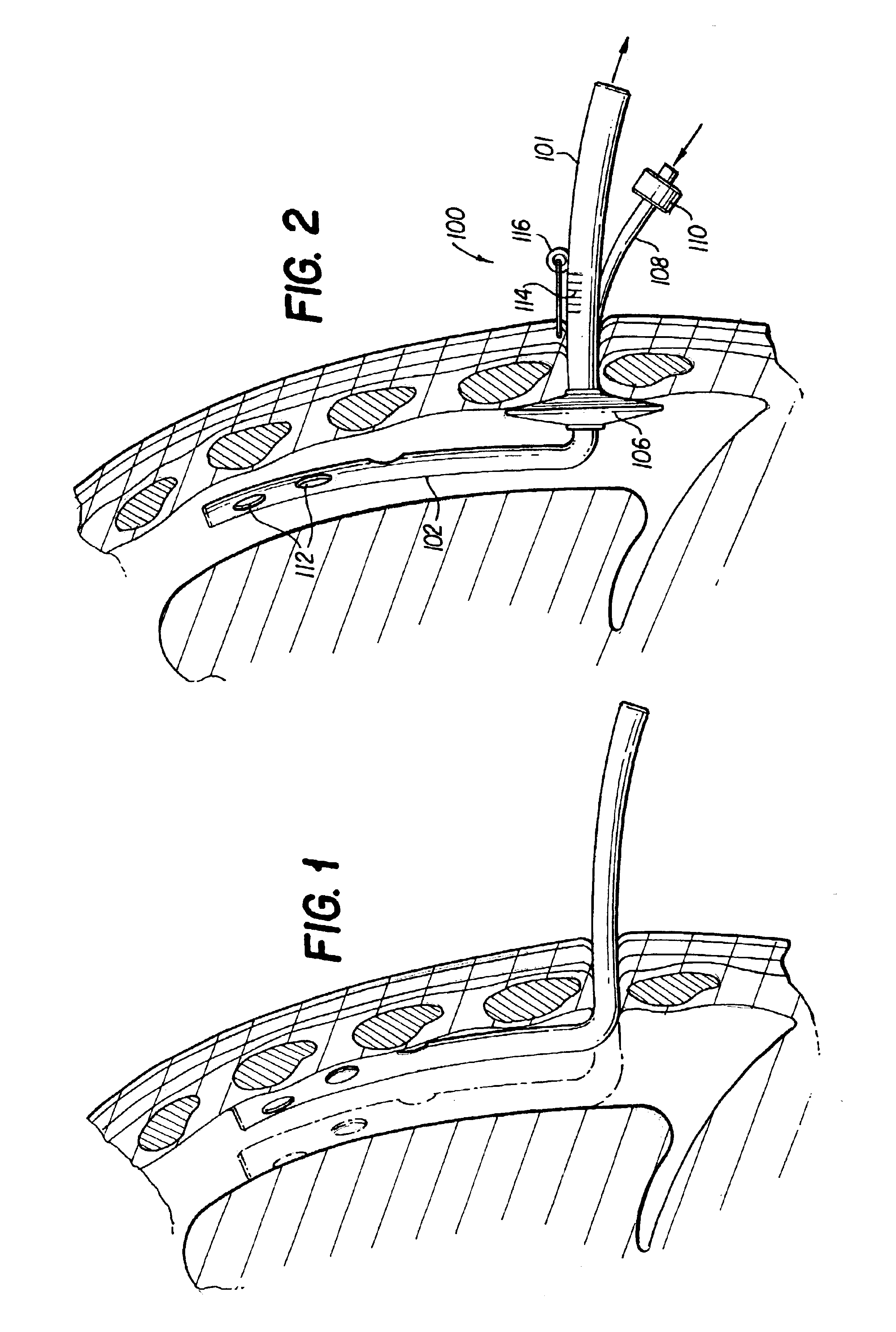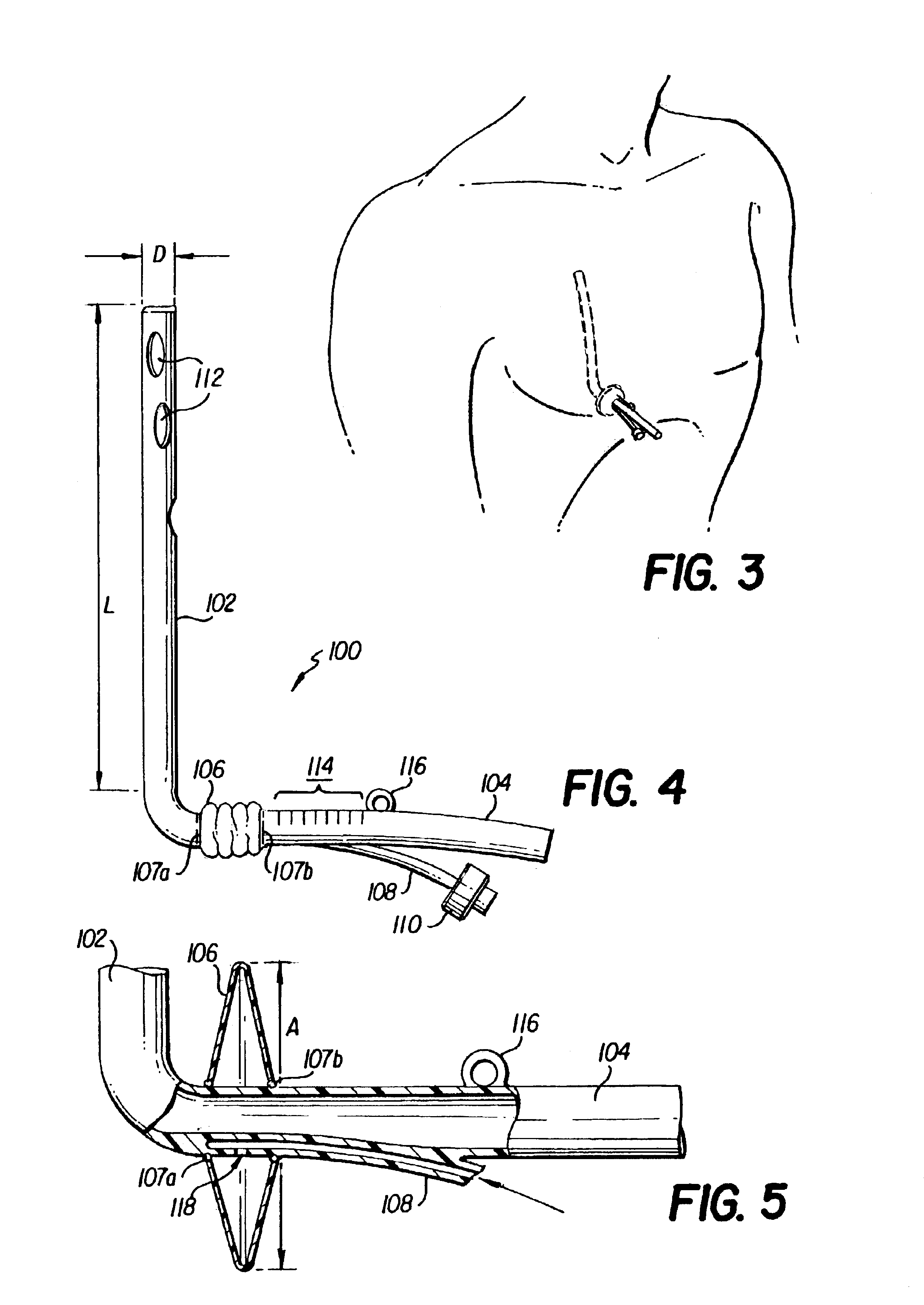Method and apparatus for pleural drainage
a technology of pleural cavity and pleural tube, which is applied in the field of pleural cavity evacuation of liquids and air, can solve the problems of poor tube function or non-function, increase hospitalization time and pain, and reduce the medical benefits of the tub
- Summary
- Abstract
- Description
- Claims
- Application Information
AI Technical Summary
Benefits of technology
Problems solved by technology
Method used
Image
Examples
Embodiment Construction
FIG. 1 is a schematic of a traditional chest tube and its placement inside the thoracic region of a patient through a percutaneous incision in the chest according to the prior art. As shown, the distal end of the chest tube, with its plurality of perforations for evacuating gases, liquids and solids, can easily rest against the structure of the ribs, if pulled forward, or pressed against the lungs, if pushed too far inward, reducing the volumetric flow rate of materials being evacuated. As shown in FIG. 1, a practitioner has a very small space in which set the chest tube to maximize the efficiency of the device.
FIG. 2 is a schematic of a chest tube 100, manufactured in accordance with the present invention, that is placed inside the thoracic cavity of a patient through a percutaneous incision in the patient's chest. The chest tube 100 is generally L-shaped, having a distal section 102 for receiving fluid, a proximal section 104 for the carrying of the fluid outwardly from the chest....
PUM
 Login to View More
Login to View More Abstract
Description
Claims
Application Information
 Login to View More
Login to View More - R&D
- Intellectual Property
- Life Sciences
- Materials
- Tech Scout
- Unparalleled Data Quality
- Higher Quality Content
- 60% Fewer Hallucinations
Browse by: Latest US Patents, China's latest patents, Technical Efficacy Thesaurus, Application Domain, Technology Topic, Popular Technical Reports.
© 2025 PatSnap. All rights reserved.Legal|Privacy policy|Modern Slavery Act Transparency Statement|Sitemap|About US| Contact US: help@patsnap.com



